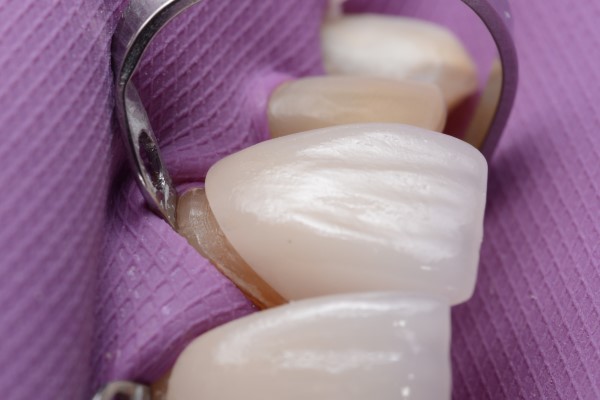How a Dental Crown Is Used for a Damaged Tooth

A dental crown is a device used to restore the functions and look of a tooth that has been damaged. If you need a root canal, a fractured tooth, or a big filling, your dentist may also decide to place a dental crown. The new crown covers the part of the tooth visible above the gums.
How is a dental crown used to restore a damaged tooth?
Dental crowns are permanently bonded to teeth that are severely decayed, fractured, or damaged. They cover the whole region of the natural tooth's crown that is above the gum line. Dental crowns are created to fit the patient's tooth and can be composed of various materials, including porcelain, composite resin, and gold.
Dentists use crowns for various purposes. They can prevent a cracked tooth from additional deterioration, strengthen a weak tooth, support a tooth with big fillings, and restore the form of a damaged tooth. The crown is a restoration that supports and replaces the tooth structure that has been damaged. When a crown is bonded to a broken tooth, it effectively becomes a part of the tooth and helps to keep it together.
A dentist usually recommends crowns to restore the function, form, look, and alignment of a damaged tooth. It is the only visible part of the tooth once it is in position. They are designed to blend in with the rest of the teeth and are usually undetectable. Crowns are made of strong and long-lasting materials so they can withstand the pressure of chewing and biting.
The dental crown placement
The soft tissues around the tooth that will receive the dental crown will be numbed with a local anesthetic by the dentist. They will remove a portion of the tooth enamel on both sides with a dental drill to make room for the new crown. If a portion of the present tooth's structure is missing, the dentist may fill up the gaps to provide a solid foundation for the dental crown. Following that, the dentist will take imprints of the teeth and send them to a dental lab, which will manufacture the crown.
After receiving the patient's tooth impressions, the dental lab will construct the crown in around two weeks. The dentist will offer a temporary crown to safeguard the tooth while it is being made. When the permanent crown is ready, a second appointment will be required. Next, the dentist will remove the temporary crown and fit the new one properly to the tooth and bite.
When the dentist is happy with the tooth's alignment, dental cement will firmly attach the crown to the tooth. The cement drying process ensures that the crown is securely attached.
The bottom line
If you currently have a tooth that is damaged, cracked, or decayed, it is a good idea to schedule a consultation appointment with a dentist as soon as possible. They will assess your situation and recommend the appropriate treatment.
Request an appointment here: https://www.houstonpersonaldentist.com or call Jeff Tollett, DDS at (713) 481-3045 for an appointment in our Houston office
Check out what others are saying about our dental services on Yelp: Dental Crowns and Dental Bridges in Houston, TX.
Recent Posts
If you’ve ever broken a tooth, then you’ve likely had a dental crown put on. What you may not know is what exactly a crown is and how they are used by the dentist. The crown itself is a very versatile dental application that works to restore the shape of a tooth as well as…
When there are issues with the teeth, a dentist performs a variety of procedures to treat them, and one is the placement of dental crowns. A crown is a cap that looks like a tooth, and it covers an existing tooth to restore function. A crown protects a tooth and prevents further issues from occurring. A…
Looking for a general dentist? General dentistry is one of the more popular dental niches operating today, as general dentists perform the necessary general dental services that patients need on a regular basis. This type of dental professional is one who can be compared to a general practitioner, as they are a patient's first contact…
Dental bridges are made up of artificial teeth that close spaces between teeth and dental crowns that are placed on the teeth closest to the gap. These oral prosthetics are typically used to close up gaps in a person’s smile due to missing teeth.Dental bridges are a less-invasive approach to replacing missing teeth than implants.…


